
views
X
Research source
Suicide, however, is not inevitable. People who are considering suicide often show signs that they are at risk before an attempt, and these instructions will help you recognize the warning signs of suicide and take action to prevent it. If you or someone you know is suicidal, or in the act of attempting suicide, it's important to get you or that person hospitalized immediately.
If you are in the US, you can call 911 for emergency or reach a suicide hotline by calling or texting 988. [2]
X
Research source
If you are in the UK, call 999 for emergency or 116 123 to reach a suicide hotline. [3]
X
Trustworthy Source
National Health Service (UK)
Public healthcare system of the UK
Go to source
Recognizing Mental and Emotional Warning Signs

Recognize suicidal thought patterns. There are a number of thought patterns that are often present among those who attempt suicide. If someone tells you they are experiencing one or more of these issues, this may be a matter for concern. For example, they might: Dwell on a bad thought obsessively, unable to stop thinking about it. Believe there is no hope for them, and no way to end the pain other than killing themselves. See life as meaningless or believe they have no control over their lives. Often describe the sensation that their brain is in a fog, or have difficulty concentrating.

Recognize suicidal emotions. Similarly, suicidal individuals frequently experience troubled emotional states that can lead them to drastic actions. For example, they might: Suffer from extreme mood swings, such as becoming suddenly depressed or angry. Experience extreme anger, rage, or vengeful feelings. Suffer from high levels of anxiety. They are also frequently irritable. Experience strong feelings of guilt or shame, or the sense that they are a burden to others. Feel a sense of loneliness or isolation, even when among other people, and may also exhibit signs of shame or humiliation.

Recognize verbal warnings. There are many verbal cues that might signify that someone may be experiencing these types of distress and may be planning to take their own life. For example, if someone talks a lot about dying, this may be a warning sign if it's not something that person normally would do. There are also many other verbal cues to look out for, such as a person making any of the statements below. “It’s just not worth it,” “Life isn’t worth living,” or “It doesn’t matter anymore.” “They won't have me around to hurt anymore.” “They’ll miss me when I’m gone,” or “You’ll be sorry when I’m gone.” “I just can’t stand the pain,” or “I just can’t deal with everything — life’s too hard.” “I’m so lonely I wish I could die.” “You/my family/my friends/my partner would be better off without me.” “Next time I’ll take enough pills to do the job right.” “Don’t worry, I won’t be around to deal with that.” “I won’t be in your way much longer.” “Nobody understands me — nobody feels the way I do.” “I feel like there is no way out,” or “There’s nothing I can do to make it better.” “I’d be better off dead,” or “I wish I was never born.”

Beware of sudden improvement. Keep in mind that the highest potential for suicide is not necessarily when a person appears to have hit rock bottom, but may instead be when they appear to be getting better. A sudden improvement in mood may indicate that the individual has made peace with the decision to end their life, and perhaps even has a plan in place for doing so. As such, if someone has been showing signs of depression or suicidal feelings and suddenly seems much happier, you should take preventative steps without delay. If a person is starting to visit friends or family and suddenly being really nice and looking seemingly at peace, it could be possible that they have already made a decision to take their own life. Start taking immediate action.
Recognizing Behavioral Warning Signs

Look for signs of "tying up loose ends." People planning suicide may take measures to settle their affairs before proceeding. This is a major warning sign since someone tying up loose ends probably has a suicide plan in place. Someone who is suicidal may do one or more of these to get ready: Give away their prized possessions. Make certain financial arrangements, such as suddenly writing a will. Say goodbye to loved ones. A person that is considering suicide may suddenly make a point of saying a heartfelt goodbye at odd times.

Look out for reckless, dangerous behavior. Since suicidal people feel no reason to live, they may take risks that could lead to severe consequences, including death, such as: Excessive use of drugs (legal or illegal) and alcohol. Reckless driving, such as driving too fast or under the influence. Self-harming behavior, such as cutting themselves. Standing in the middle of a busy road with the possibility of getting run over by a car. Unprotected sex, often with multiple partners.

Watch out for anything the person could use to easily attempt suicide. It's a good idea to investigate if the person has recently purchased a firearm or lots of pills. If someone seems to be collecting medication or purchasing new weapons out of the blue, it's important to act quickly. Once their plan is in place, the person could attempt suicide at any time.
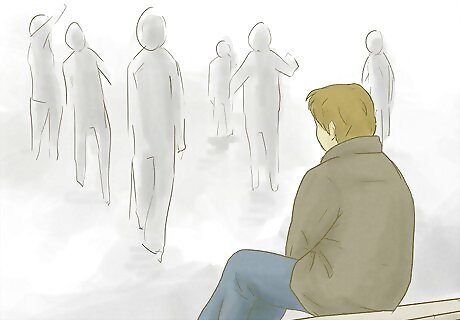
Be aware of social withdrawal. Suddenly avoiding friends, family, or coworkers is common among suicidal individuals, who often quietly withdraw from normal social interactions. Take action, rather than just listening to someone who says "I just want to be left alone."
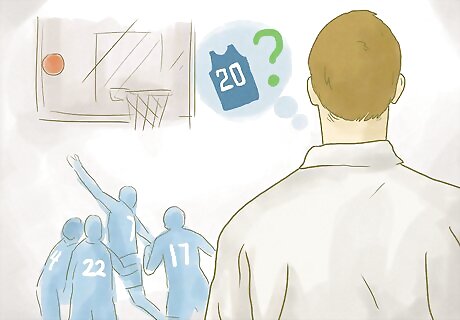
Note any extreme changes in routine. If someone suddenly loses interest in their favorite weekly basketball games or game nights, this could be a warning sign. Skipping out on going out or taking part in activities they normally enjoy could indicate that someone is feeling unhappy, depressed, or in the worst cases, even wanting to end their life.

Be aware of unusually lethargic behavior. Suicidal, depressed individuals often have little energy for basic mental and physical tasks. In particular, be on the lookout for: Unusual difficulty making ordinary decisions. Loss of interest in their favorite activities. General lack of energy, behaviors such as staying in bed all day or not wanting to eat.

Watch for warning signs in teens. If the person in question is a teenager, watch for additional common warning signs and possible triggers for teens. For example: The teen is in trouble with their family or the law. Life circumstances like a recent breakup with a partner, not getting into their college of choice, or the death of a close friend. Lack of friends, trouble in social situations, or withdrawal from close friends. Self-care issues, like insufficient eating or overeating, hygiene issues like infrequent showering, or lack of concern about appearance (e.g., a normally-fashionable teenager who suddenly stops using makeup or dressing well). Drawing or painting scenes of death. Sudden changes in their normal behavior such as a drastic drop in grades, drastic personality changes, or rebellious actions may also be warning signs. Conditions such as eating disorders, especially anorexia or bulimia, can lead to feelings of depression, anxiety, and even suicide. A child or teen being bullied or bullying others may be at a higher risk for suicide as well.
Recognizing the Risk Factors for Suicide
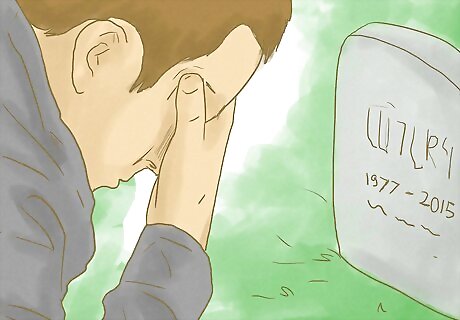
Consider life history and current circumstances. An individual's experiences, both recent and distant, can also make one more likely to attempt suicide. The death of a loved one, the loss of a job, a serious illness (especially involving chronic pain), bullying, and other highly stressful life events can act as triggers for suicide and put someone at higher risk. Of particular concern is whether a person has tried to die by suicide before. Someone who has previously attempted suicide is likely to try again. In fact, one-fifth of the people who die by suicide have made a previous attempt. A history of physical or sexual abuse also puts one at a higher risk of suicide.

Consider the individual's mental health. The presence of an underlying mental health disorder, such as bipolar disorder, major depression, or schizophrenia, or a history of such disorders, is a major risk factor. In fact, 90 percent of suicide cases are linked to depression or another mental illness, and 66 percent of people who think seriously about suicide have a mental disorder of some kind. Disorders characterized by anxiety or agitation (e.g., post-traumatic stress disorder) and poor impulse-control (e.g., bipolar disorder, conduct disorders, substance disorders) are the most likely risk factors for making a suicide plan and a suicide attempt. The symptoms of mental illnesses that raise the risk of suicide include: intense anxiety, panic attacks, desperation, hopelessness, feeling that one is a burden, loss of interest and pleasure, and delusional thinking. While the statistical relationship between suicide and depression is a complicated one, the majority of people who die from a suicide attempt have major depression. People with more than one mental health problem are at especially high risk of suicide. Having two mental disorders nearly doubles the risk of suicide, and three nearly triples the risk of suicide when compared to people who endure one mental disorder.

Investigate any family history of suicide. Scientists aren't certain yet whether the central cause is the environment, heredity, or a combination of both, but suicide does seem to run in families. At least some research suggests there is a genetic cause for this relationship, so even if someone was not raised by their biological parents, this may be a risk factor. Environmental influences in one's family life also may play a role.
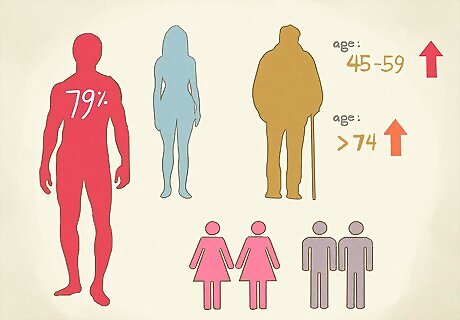
Consider the demographics of suicide. While anyone can become suicidal, statistically speaking, some social groups have higher rates of suicide than others. If someone you know may be at risk, consider the following: Males are more likely to die by suicide. For every age group and ethnicity, the rate of suicide for males is quadruple the rate for females. In fact, males account for 79% of all suicides. Regardless of gender, LGBTQ (lesbian, gay, bisexual, and transgender/nonbinary and queer) individuals are four times more likely to die by suicide. Older people are more likely to die by suicide than young people. People between the ages of 45 and 59 have the highest suicide rate, and people older than 74 years have the second highest rate of suicide. Native Americans and whites are also statistically more likely to die by suicide than other ethnic groups. These trends don't mean you shouldn't be worried about someone who is not in one of these high risk groups. If the person you are concerned about displays signs of being suicidal, regardless of their gender, age, race, or sexual orientation; take their situation seriously immediately. However, if someone is part of one of these groups, their risk may be higher.
Talking to a Suicidal Person

Set the right tone. If someone you know is exhibiting signs of being suicidal, one of the most important things you can do is talk to that person about what you've noticed in a loving and non-judgmental way. Be a good listener. Maintain eye-contact, pay close attention, and respond in a gentle tone.

Raise the issue directly. A good starting point is to say: “I've noticed you’ve been feeling really down lately, and I have been very concerned. Are you having thoughts of suicide?” If the person says yes, the next step is to ask: “Do you have a plan for suicide?” If they answer in the affirmative, call 911 immediately! A person who has a plan needs to get help right away. Stay with the person until help arrives.

Avoid making the situation worse. There are some things that may seem helpful to say, but actually may increase a suicidal person's guilt or shame. For example, avoid the following types of comments: “Tomorrow is another day. Everything will look better then.” “It can always be worse. You should feel lucky for everything you have.” “You have so much to look forward to/You have everything going for you.” “Don’t worry. Everything/you will be fine.”

Avoid making statements that seem dismissive. Some types of comments can convey the idea that you don't take the person's feelings seriously. Avoid the following types of remarks: "Things aren’t that bad." “You wouldn’t hurt yourself.” “I’ve felt overwhelmed too, and I made it through.”

Don't keep secrets. If someone confides in you that they are suicidal, do not agree to keep the matter a secret. This person needs help as soon as possible. Keeping the matter secret will only delay needed assistance.
Taking Action to Prevent Another Person's Suicide
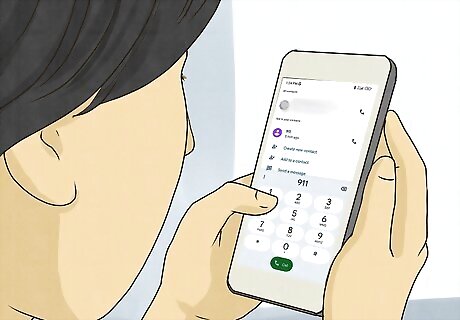
Call 911. If you believe someone is an immediate suicide risk, call 911 without delay.

Call a suicide hotline. Suicide hotlines aren't just for people who are suicidal. They also provide help for people trying to prevent another person's suicide. Even if you just need to know what to do, a suicide hotline can help. They can talk you through the immediate situation or direct you to take further, more serious actions. They are also connected to doctors and counselors across the nation. In the US, you can call or text 988. In the UK, call 116 123.
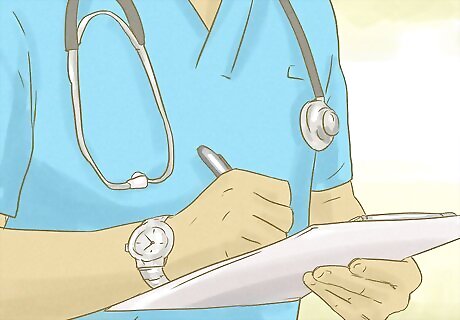
Refer the suicidal person to professional help. Make sure the person sees a mental health professional as soon as possible. The suicide hotline numbers provided above can refer you to a licensed psychologist or psychiatrist, or you can find one online who specializes in this area. By being there for this person and leading them to qualified professional help, you can prevent a suicide and save a life. Don't waste time. Sometimes preventing a suicide comes down to a matter of days or even hours, so the sooner this person can get the help they need, the better.
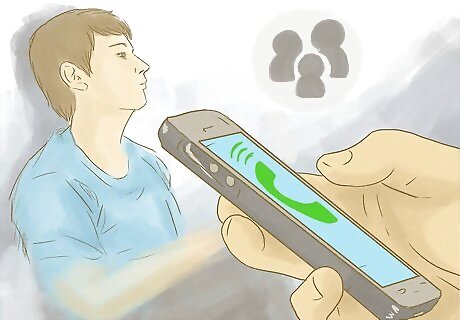
Notify the suicidal person's friends and family. This includes their parents, guardians, and other loved ones. This can take some of the pressure off you, since they can also be involved in the effort to stop this person from attempting suicide. Getting these individuals involved may also help the suicidal person see that others care about them.
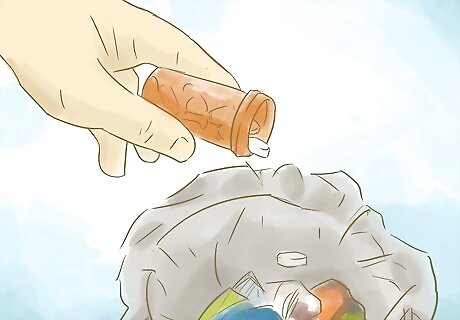
Remove the tools of suicide. If possible, remove any potentially lethal items from the person's home. This includes firearms, drugs, and any other weapons or poisons. Be thorough. People can kill themselves with many items you wouldn't necessarily think of. Items like rat poison, cleaning products, and even ordinary cutlery can be used in a suicide attempt. About 25 percent of all suicides are carried out by suffocation. Usually, this means hanging. So make sure to remove items such as belts, ties, ropes, and sheets. Let the individual know you will hold onto these items until they are feeling better.
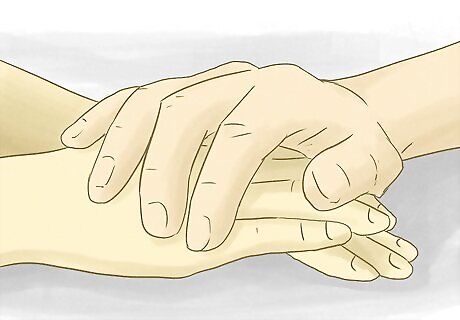
Continue to offer support. Even after immediate danger has passed, stay engaged with the person. Someone who is depressed or feeling isolated is not likely to ask for help, so you'll need to make yourself present. Call, visit, and generally follow up with the person frequently to see how they are doing. Here are other ways you can provide ongoing support: Make sure the person goes to their therapy appointments. Offer to drive the person there so you can be sure that they follow through on the appointment. Make sure the person takes any prescribed medication. Don't be an enabler when it comes to drinking alcohol or using recreational drugs. Someone who is suicidal should stay away from these items, as they can make their problem much worse. Help the person make a safety plan in case they keep having suicidal thoughts. This should be a list of things the person can do to avoid attempting suicide, such as calling loved ones, staying with a friend or even checking into a hospital.
Dealing With Your Own Suicidal Feelings

Call 911. If you are experiencing the suicidal feelings described above and believe you are imminently at risk of dying by suicide (i.e. you have a plan and the means to carry it out), call 911 immediately. You are in need of emergency help.
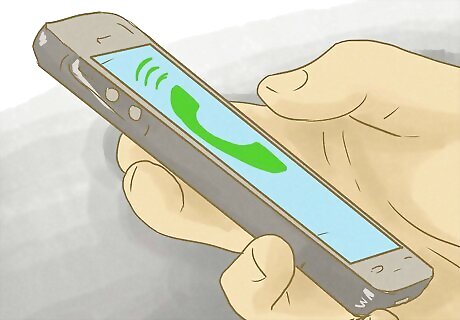
Call a suicide hotline. While you are waiting for first-responders to arrive, call or text the Suicide and Crisis Lifeline at 988. This will help pass the time and decrease the risk until help comes.
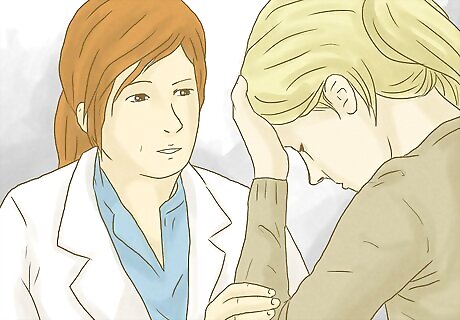
See a mental health professional. If you are having suicidal thoughts and feelings but do not have a plan, make an appointment with a therapist or counselor. If your situation worsens while you await your appointment and you develop a suicide plan, call 911.




















Comments
0 comment